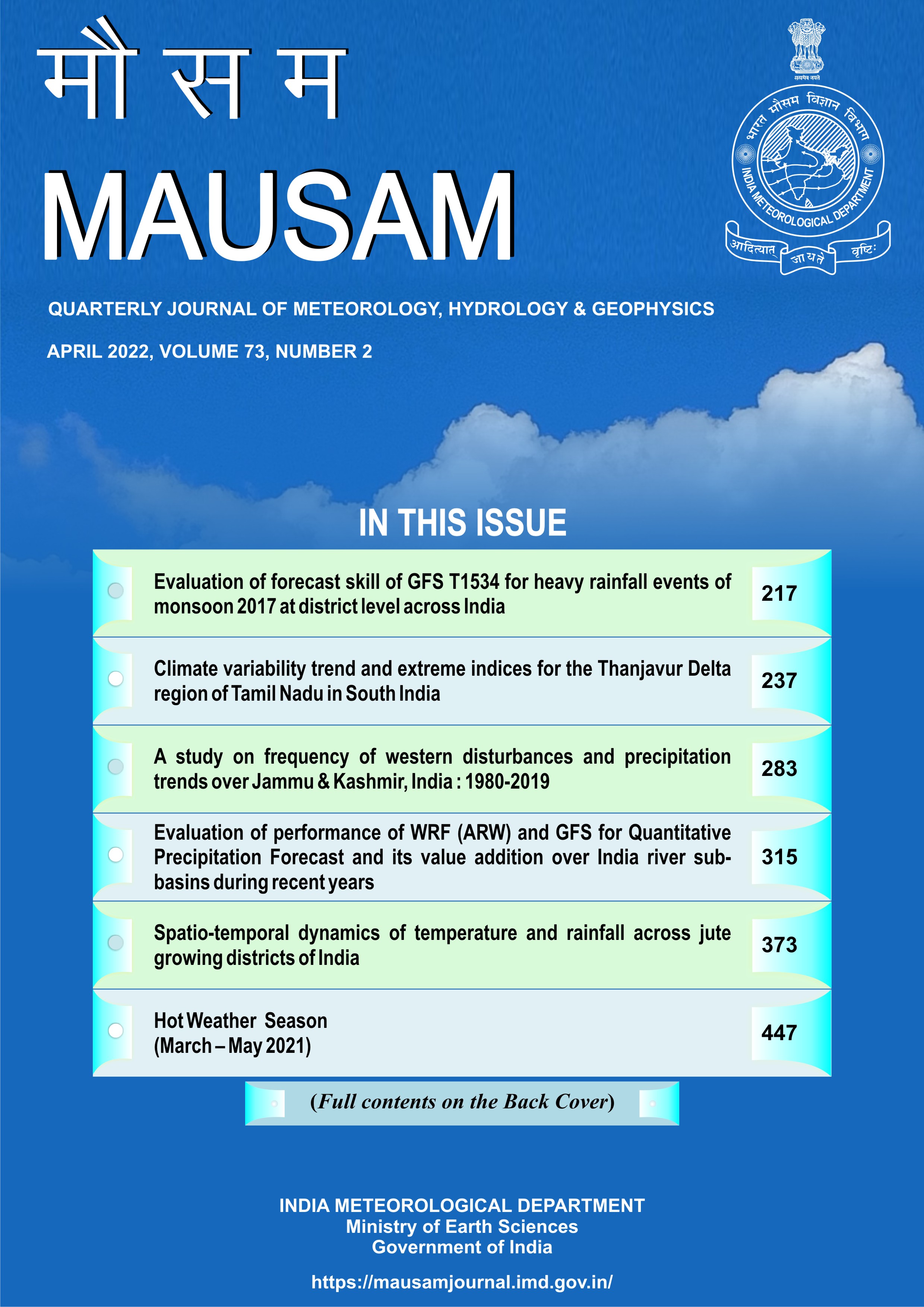Evaluating the impact of intra-seasonal change in temperature and solar radiation on phenology and yield of rice using CERES-rice model in Punjab
DOI:
https://doi.org/10.54302/mausam.v73i2.5485Keywords:
CERES-Rice model, Growth periods, , Phenology, Solar radiation, Temperature, YieldAbstract
Rice is a staple food of global as well as Indian population and its productivity is vulnerable to climate change. Keeping in view the observed trends in climate variability, phenology and yield of rice were simulated using CERES-Rice model under climatic scenarios of changes in temperature (+0.5, +1.0, +1.5, +2.0, +2.5, +3.0 °C from normal) and solar radiation (+2.5, +5.0, +10.0, +12.5, +15.0, +20.0% from normal) and their combined interactive effects during differential growth periods, i.e., whole season, vegetative phase, grain filling phase, 0-30 days after transplanting (DAT), 30-60 DAT, 60-90 DAT. In general, with a rise in temperature from normal, the CERES-Rice model predicted advancement in phenological development in rice and vice versa. In general, the increase in yield of rice cultivars for different transplanting dates was observed with decrease in temperature and increase in radiation and vice-versa. With rise in temperature from normal, CERES-Rice model showed maximum decrease in grain yield of rice during whole season change followed by grain filling phase change and vegetative phase change in decreasing order. Among the growth periods, maximum decrease in yield was observed in 0-30 DAT (early vegetative) followed by 30-60 DAT (late vegetative) and 60-90 DAT (grain filling) in decreasing order. Under the conditions of heat and radiative stress, grain filling phase and early vegetative phase was more vulnerable. The CERES-Rice model predictions showed that rice cv. PR-118 (long duration cultivar) was more tolerant to heat and radiative stress than cv. PR-115 (short duration cultivar) and hence may be recommended for cultivation due to its tolerant traits towards maintaining its good grain yield and harvest index.
Downloads
Published
How to Cite
Issue
Section
License
Copyright (c) 2022 MAUSAM

This work is licensed under a Creative Commons Attribution-NonCommercial 4.0 International License.
All articles published by MAUSAM are licensed under the Creative Commons Attribution 4.0 International License. This permits anyone.
Anyone is free:
- To Share - to copy, distribute and transmit the work
- To Remix - to adapt the work.
Under the following conditions:
- Share - copy and redistribute the material in any medium or format
- Adapt - remix, transform, and build upon the material for any purpose, even
commercially.



